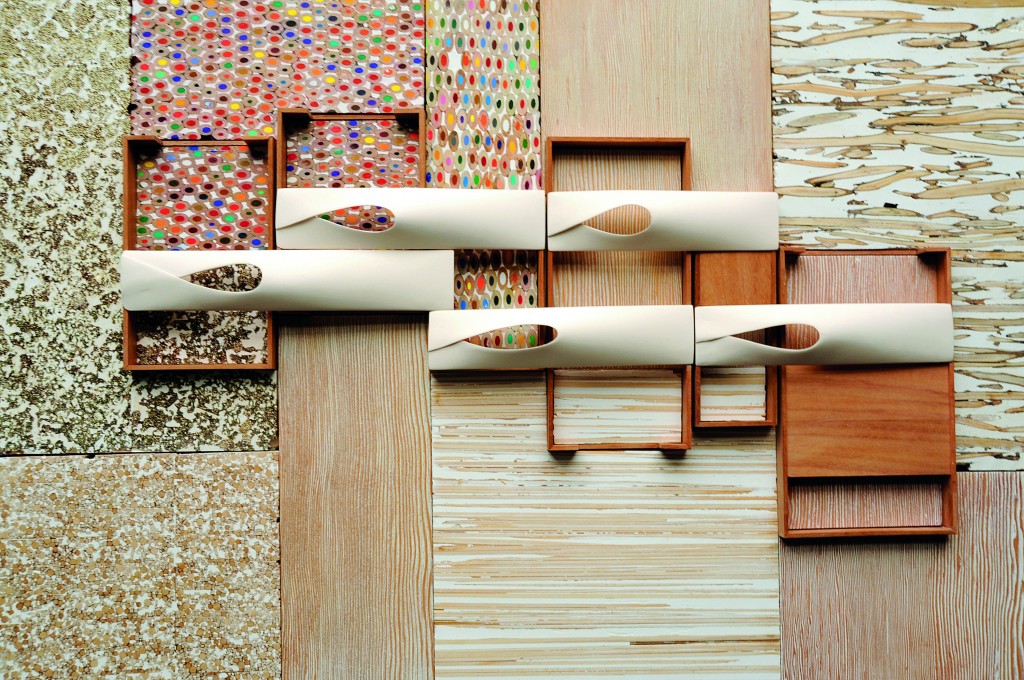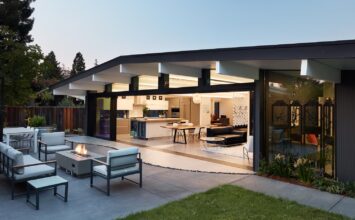
Case Work
Studies in Form, Space & Construction by Brad Cloepfil/Allied Works Architecture, JUN 4 – SEP 4, 2016
This summer, the Portland Art Museum presents the first comprehensive exhibition exploring the sculptures and drawings of Allied Works Architecture, the celebrated firm based in Portland and New York City. Presented within an immersive installation designed by Allied Works, Case Work: Studies in Form, Space & Construction by Brad Cloepfil/Allied Works Architecture features a cross-section of over 60 works made over the past 15 years, the majority of which have never been presented publicly. A counterpoint to the customary building models and technical architectural renderings, these works are both singular artistic creations and manifestations of the investigative process that is at the heart of the firm’s practice.
Organized by the Clyfford Still Museum and the Portland Art Museum in association with Allied Works, Case Work made its debut at the Denver Art Museum in January 2016 and will be on view in Portland from June 4 through September 4, 2016, then embark on an international tour.
Established by Brad Cloepfil in 1994, Allied Works Architecture has been widely recognized for crafting powerful spaces for art and interaction, and for developing architectural designs that are forged by the defining elements of their mission and site. Case Work marks the first time that the public will be able to view the artistic explorations of material, form, and spatial experience that have guided the firm’s architectural designs, including both realized buildings as well as projects that have yet to take shape.
In Portland, Allied Works’ projects have included the Wieden + Kennedy Agency building, which radically transformed an historic warehouse in Portland’s Pearl District into a world headquarters that has become a benchmark for adaptive reuse and workplace architecture. Other prominent local designs by Cloepfil and Allied Works include the Arlene and Harold Schnitzer Center for Art and Design at Pacific Northwest College of Art; the Creative Arts Center at Catlin Gabel School; and the Sokol Blosser Winery tasting room, whose organic architectural form is derived from the vineyard rows and wooden agricultural buildings of the region.
“Since launching Allied Works in Portland in 1994, Brad Cloepfil has been celebrated for creating timeless and beautifully executed works of architecture,” said Brian Ferriso, The Marilyn H. and Dr. Robert B. Pamplin Jr. Director and Chief Curator of the Portland Art Museum, which co-organized the exhibition with the Clyfford Still Museum. “This exhibition provides audiences with an unusual opportunity to explore the conceptual sculptures and gestural drawings that underpin Brad’s creative practice and that embody the firm’s unique approach and standing within the field.”

The exhibition presents 17 of the firm’s bold and tactile architectural sculptures, made from wood, porcelain, resin, concrete, and collaged textiles, alongside material and structural studies. More than 30 drawings, ranging from gestural sketches to large-scale charcoal and pastel drawings, will also be on view. The works are integrated within a bespoke presentation system—a linear steel armature designed by Allied Works as a conceptual model, enlarged to life size, that can be adapted and reconfigured at each venue. Visitors will move through the installation to encounter a series of unique, custom-built “cases,” designed to reflect the specific qualities inherent in the works they enclose and present. Each case serves a dual function of transporting the objects from venue to venue, enabling a literal “unpacking” of ideas within the exhibition space.
Highlighted works include:
- A single reclaimed beam of Douglas fir carved to reveal a geometric form within a field of spikes, representing the desire for a singular, unified experience across structure, landscape, and earth in the building that would become the Clyfford Still Museum in Denver.
- A smooth concrete object of geometric forms cast around salvaged pieces of different brass musical instruments. The form speaks to the sheer variety of musical expression while simultaneously referencing modernist sculpture, and was created as part of the conceptual design phase for the National Music Centre of Canada.
- A quilt-like collage of wooden bits, porcelain, and sawed colored pencil, inspired by aerial views of the Wisconsin farmland and created for the firm’s Wisconsin Art Preserve proposal.
- An assemblage of acrylic, cast resin, polished brass, and charred pine created during the conceptual design phase for the Dutchess County Estate Main House in New York State. The work evokes a transparent form that extends into a landscape, only to be forced to turn back in on itself, held within the earth’s black embrace.
- An interlocking brass structure imbued with movement, snaking across the landscape and binding the form to its site was created during the preliminary process of the Musée national des beaux-arts du Québec design competition.
“Case Work highlights a little-known part of Allied Works’ practice—namely the handmade works of art developed to articulate, inform, and accelerate the firm’s creative vision,” said exhibition curator Dean Sobel, a specialist in modern and contemporary art and the director of the Clyfford Still Museum, which was designed by Allied Works. “These sculptures and drawings are a pivotal part of the investigative process that distinguishes the firm’s approach. At the same time, these works are complete artworks in their own right, hidden gems that crystallize and convey core ideas or conceptual intentions.”

The Case Work exhibition in Portland includes a gallery detailing the process of building the Clyfford Still Museum in Denver, from conception through completion. Visitors experience the museum’s creation through photographs, drawings, and models, as well as a painting by Still, the pioneering Abstract Expressionist whose work served as inspiration for the architect.
Case Work is the latest entry in the Portland Art Museum’s design series, which has featured popular exhibitions such as China Design Now and last year’s Italian Style: Fashion Since 1945. Related programs include an opening lecture by Brad Cloepfil, on June 5, and a Chamber Music Northwest concert on July 14 exploring the architecture of composition. The exhibition is accompanied by a catalog including essays by Sobel and Cloepfil, available in the Museum Store.
Organized by the Clyfford Still Museum and the Portland Art Museum in association with Allied Works Architecture, Case Work: Studies in Form, Space & Construction by Brad Cloepfil/Allied Works Architecture is curated by Dean Sobel, Director of the Clyfford Still Museum, and host curated by Brian J. Ferriso, The Marilyn H. and Dr. Robert B. Pamplin, Jr. Director and Chief Curator of the Portland Art Museum. The exhibition is supported by The Graham Foundation for Advanced Studies in the Fine Arts.
SPONSORS:
Supported in part by The Paul G. Allen Family Foundation, PDX CONTEMPORARY ART, Mrs Dorothy Lemelson, John and Janet Jay, Project^, Janet Williamson, Fran and John von Schlegell, Sokol Blosser Winery, Laura S. Meier, and the Exhibition Series Sponsors.









